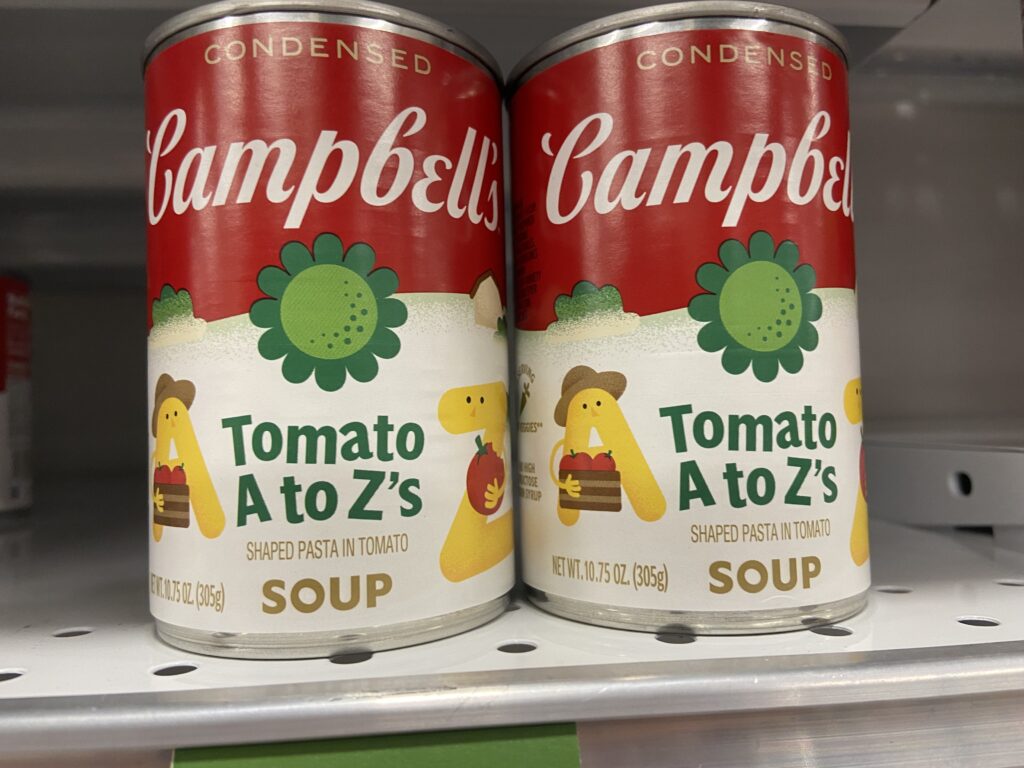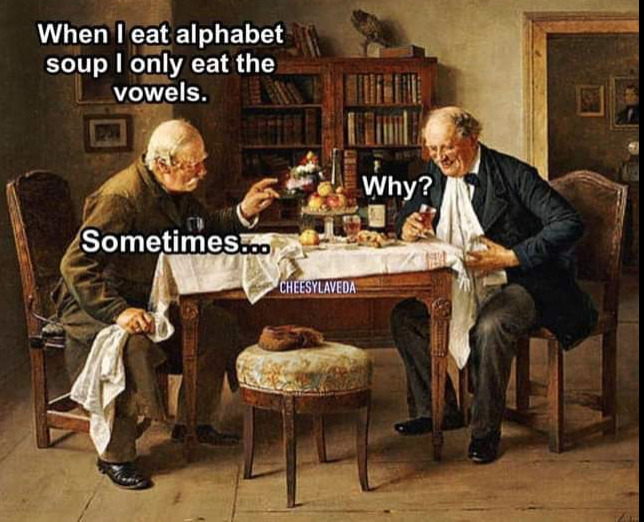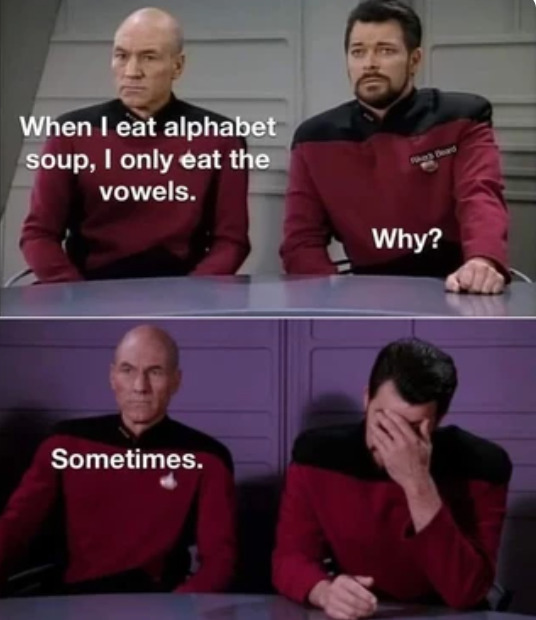Thought I’d keep this post short, light, and bring a smile to your face!
September is such a busy month for families and teachers alike!
Here’s the first of a couple of ‘Smile Makers’:
My mum used to feed me alphabet soup when I was a kid. She insisted on me telling everyone that I loved it. I didn’t really, she was just putting words in my mouth!

Too many routines to put in place, too many school supplies, attire to purchase, and after school schedules to make. I fondly recall this time of year in some ways as a ‘new start’, time to make first impressions, and meeting new people. And I also recall it ‘not’ so fondly since there were so many moving parts as both a teacher and a parent of three kids 5 years apart in total. We all get through it. Yes, with some rough patches on the road, but the road does smooth out and hopefully, your road is well on its way toward smoothing out by now.
Image by Lori Josephson
So…back to the point of this article.
The VOWELS are clearly IN CHARGE!


I saw these two images on Facebook last week. The same lines appeared both in the past (sorry for the text cutoff) and in the present (or was it meant to be the future?). Interestingly, they were posted on educational groups and many respondents “didn’t get the joke” or “had to think about it for a few.”
Just in case, the joke is: “Why?” is a pun for the grapheme/letter ‘Y’, which is actually always a vowel except for when it appears as the first letter in a word:
yellow
yardstick
you
It’s no joke!
The written symbol ‘Y’ is often confusing for kids when learning sound/symbol relationships for consonant sounds since the ‘name’ or ‘label’ for the grapheme/letter ‘Y’ is /wī/, which is composed of 2 phonemes/sounds (/w/, /ī/), neither of which provide the consonant sound ‘Y’ (/y/ as in ‘yellow’) represents.
Let me tell you, I have assessed likely well over 100 late elementary through high school students who manifested this confusion despite having attended school for years.
So, I am sure that you are familiar with the following info about vowels:
1-The vowels are “a, e, i, o, u”. Astute individuals would also add “and sometimes y.”
2-Every word must have a vowel.
But, do you know why “every word must have a vowel” or the actual definition of a vowel”?
The ‘official’ definition of a vowel is:
one of a class of speech sounds in the articulation of which the oral part of the breath channel is not blocked and is not constricted enough to cause audible friction resulting in the ‘nucleus of a syllable’.
In other words, a vowel is an open-mouthed sound causing vibration of the vocal cords.
Every word must contain a vowel since vowels are the glue that holds the consonants together. Human beings would not be able to talk or sing without vowel sounds regardless of their native language. In fact, the word ‘vowel’ comes to us from the Latin ‘vox’, meaning ‘voice’.
Kids need to learn short vowel sounds because they are the most commonly occurring vowel sounds in English and have the most predictable spellings (with rare exceptions).
When IS ‘y’ a vowel? What of ‘Y’’s (pun intended!) importance?
‘Y’ represents a vowel sound/phoneme when it appears in any other position besides the first letter in a word.
Here are the options:
1-If ‘y’ is at the end of a word directly after a consonant, it represents either /ē/, typically in words of several syllables, as in ‘baby’ or ‘lonely’ or ‘strawberry’, or /ī/ as in ‘identify’, ‘multiply’ or ‘imply’. Often, single syllable words ending in ‘y’ directly after a consonant will also represent /ī/ as in ‘cry’ or ‘why’.
2-Words of Greek origin, often math/science words, contain ‘y’, and represent /ĭ/ as in ‘gym’, ‘mystery’, or ‘photosynthesis’
3-If ‘y’ is part of a vowel combination, as in ‘ey’, ‘ay’, or ‘oy’, the vowel sound represented will be variable as in ‘key’, ‘play’, or ‘boy’.
It takes time and practice for new and developing readers to internalize this information, so do not fret if your child(ren) and/or students are still in the midst of learning these mostly predictable patterns for reading (decoding) and spelling (encoding).
Having a teacher and/or a parent who is aware of these patterns and can explicitly teach them to children is what is most important.
Let me leave you with another smile!
Don’t leave alphabet soup cooking on the stove unattended. It could spell disaster!


Share the images and jokes with your families and students. It actually would be fun to sit around the kitchen table and eat alphabet soup as you laugh about it! Soup is a great way to welcome the crisp, autumn weather and other seasonal changes.
Image by katiebellaschi from Pixabay
Lori, might I even argue that y is a vowel in the beginning position? For example, say the letter names, ELO, in rapid succession. What do we hear? Yellow. And then there’s Yvonne and I would also argue that yet is ee-et and yes is letter names ES and on and on. Just my rebel nature replying here but that’s the way I hear it. I also like to challenge beginning w as long oo as in wood (oo-ould) and work (oo-rk) but I’m not a linguist and just having fun.
Grace,
Thanks for commenting. I appreciate all opinions and input. I hear what you are explaining and I suspect dialectical differences exist. No worries…seems like most teachers and parents would still continue teaching ‘y’ in the initial position as a consonant sound..hence the ‘sometimes’.
Lori